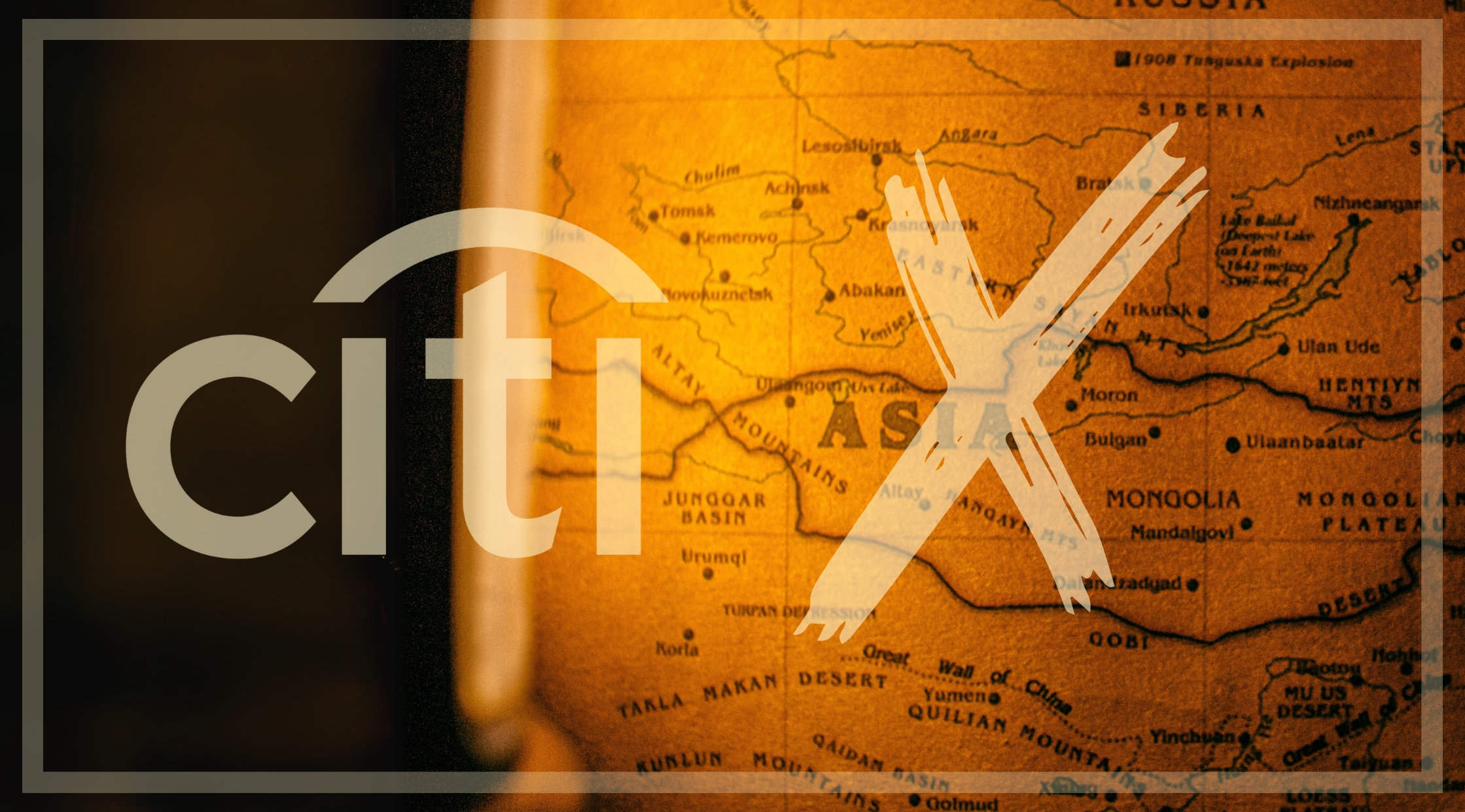In April 2021, Citigroup announced it would exit consumer banking in 13 markets across Asia, Europe, the Middle East, and Africa (EMEA). This decision affected countries like India, China, South Korea, Australia, Bahrain, Vietnam, Indonesia, Malaysia, Poland, Russia, Taiwan, Thailand, and the Philippines. It was part of a bigger plan under CEO Jane Fraser to focus on wealth management and institutional clients, with plans to grow their assets under management for clients in Asia to $450 billion by 2025. The move has reshaped markets and sparked conversations about its impact.
Citigroup’s decision comes at a time when digital banking is growing and customer needs are changing. Managing consumer banking in many countries has become costly and complicated. By zeroing in on its strengths, Citigroup is setting itself up for long-term growth in areas where it can succeed.
Citigroup will exit its consumer franchises in Australia, Bahrain, China, India, Indonesia, South Korea, Malaysia, the Philippines, Poland, Russia, Taiwan, Thailand and Vietnam.https://t.co/TW5Udws9BK
— #DisruptionBanking (@DisruptionBank) April 15, 2021
Mark Mason, the chief financial officer of Citi, corroborates this in a statement saying, “We are directing investments and resources where we have competitive advantages and the scale necessary to drive higher returns over the long run.”
According to Fraser, he wants the bank to “double down on wealth.” Instead of spreading its resources thin, Citigroup is concentrating on wealth hubs like Singapore, Hong Kong, the UAE, and London. These cities are home to many high-net-worth individuals (HNWIs) and ultra-high-net-worth individuals (UHNWIs).
Fraser emphasized in a statement that, “While the other 13 markets have excellent businesses, we don’t have the scale we need to compete.”
The numbers tell the story. In markets like India, Citigroup struggled. By 2020, Citibank held a 0.6% share of advances and a 1.1% share of deposits in India’s banking sector, significantly trailing behind local banks such as HDFC Bank. Competing in these markets wasn’t worth the squeeze. Wealth management, on the other hand, offers much juicier profits and growth opportunities. According to Credit Suisse’s Global Wealth Report 2021, the number of millionaires in the Asia-Pacific region was projected to increase by approximately 71%, from 15.6 million in 2020 to about 26.7 million by 2025.
The company’s net income dropped 26% to $3.2 billion. #Citigroup cited an increase in expenses for the sharp decline, adding that the results included a “pre-tax impact” of about $1.2 billion related to the sale of its consumer banking businesses in #Asia.https://t.co/NyNI9zs5zS
— #DisruptionBanking (@DisruptionBank) January 14, 2022
Global wealth trends back up this move. The Asia-Pacific region has experienced growth in high-net-worth individuals, with a 4.2% rise in HNWI population and a 5.4% increase in HNWI wealth in 2021, placing it behind North America and Europe in terms of growth rates, according to Capgemini. By targeting this group, Citigroup is tapping into a growing market.
The decision also reduces complexity. Running retail banking in many countries requires big investments in technology and compliance. By focusing on fewer areas, Citigroup can simplify its operations.
How This Fits Into Citigroup’s Strategic Goals
For customers and employees, the transition is a mixed bag. In India, approximately 2.4 million customers — which includes over 1.8 million credit cardholders and more than 0.9 million retail banking customers — were transferred to Axis Bank, which acquired Citigroup’s consumer banking business for 116.03 billion rupees (around $1.41 billion, based on the exchange rates at the time of the transaction). Over 3,200 employees also moved to Axis Bank. In Vietnam, United Overseas Bank (UOB) took over Citigroup’s credit card and retail banking services.
#BREAKING | Axis Bank to acquire Citibank's India consumer business for $1.6 bn in all cash deal pic.twitter.com/Mvmvw3fVoS
— CNBC-TV18 (@CNBCTV18Live) March 30, 2022
Not all employees had smooth transitions. In China, around 1,200 employees were affected by Citigroup’s decision to wind down its consumer banking business. Citigroup tried to offer new roles within its network or with acquiring institutions, but not everyone landed on their feet.
Some customers also faced disruptions. For instance, in the Philippines, Union Bank acquired Citigroup’s operations, adding over $1 billion in assets. According to Edwin R. Bautista, President and Chief Executive Officer of UnionBank, “Citibank Philippines has a great, profitable and well-run retail portfolio. It has the 3rd largest credit card franchise and is a pre-eminent wealth management provider in the Philippines.”
However, the onboarding process took months, leaving some clients worried about service continuity.
Critics argue that such exits can destabilize local economies, especially in places where Citigroup was a trusted name for decades. Losing a global player could mean less competition, which might drive up fees or slow innovation. At the same time, Citigroup’s remaining customers are likely to benefit from improved wealth management services.
This plan is all about playing to strengths. Wealth management is a high-growth, high-profit sector, especially in Asia, where millionaire populations are booming. Exiting low-margin retail markets frees up capital and energy to invest in areas with better returns, and, perhaps, wealthier clients.
6. Citibank
— Ajay Rotti (@ajayrotti) June 19, 2022
Citibank's sale of India operations is a part of their global strategy and it is being done in multiple other countries to "conserve capital and focus".
7/N pic.twitter.com/KOCb4CRles
Regulations also played a role in this decision. Running retail operations across many countries required big spending on compliance. By narrowing its scope, Citigroup can save resources and focus on its bread and butter: wealth and institutional services. CEO Jane Fraser summed it up best when she said the bank is “building a simpler, stronger bank.”
Citigroup is already doubling down on digital innovation. The bank recently launched a tailored app for ultra-high-net-worth clients, offering personalized advice and tools.
Its institutional services are also thriving. According to Citigroup’s 2022 Annual Report, Treasury and Trade Solutions (TTS) revenues rose by 32% in 2022, attributed to growing wallet share with existing clients and the addition of new client relationships. This huge growth reflects Citigroup’s strategic initiatives, such as introducing a seven-day sweeps service and the industry’s first 24/7 USD clearing capabilities, which align with the company’s efforts to position itself for the future.
Citi Chief Executive Officer Jane Fraser said that clients who’d been waiting on the sidelines to do deals are focused on moving forward with mergers and acquisitions as they see that scale is needed to compete. #investmentbankinghttps://t.co/SnC4HroZwT
— #DisruptionBanking (@DisruptionBank) November 13, 2024
Opportunities for Other Banks
Citigroup’s exit creates openings for other banks. In the Philippines, Union Bank of the Philippines (UnionBank) acquired Citigroup’s consumer banking business, which included assets totaling approximately ₱89.5 billion (about $1.8 billion) as of June 30, 2021. This acquisition encompassed Citibank’s credit card, personal loans, wealth management, and retail deposit businesses, as well as its real estate interests in Citibank Square in Eastwood, three full-service bank branches, five wealth centers, and two bank branch lites.
Citibank's Indian business:
— Aviral Bhatnagar (@aviralbhat) March 31, 2022
– 3M retail customers
– 2.2M credit cards, 1.2M bank accounts
– Deposits worth $20Bn+, loan book of $10Bn
– Net Profit of $500M+
The biz is larger and more profitable than many large Indian fintech, yet sold at ~$2B
In India, Axis Bank gained millions of new customers, strengthening its position in retail banking.
Ashu Khullar, CEO of Citi India, commenting on the exit said, “Citi has been a deeply embedded institution in India and the sharpened strategy announced today will strengthen our ability to bring the full global power of Citi to our institutional clients, reinforcing our leading positions across Corporate, Commercial and Investment Banking, Treasury and Trade Solutions, as well as Markets and Securities Services.”
Local banks are stepping in, too. In Thailand, Bangkok Bank is working hard to attract former Citigroup customers. Malaysian banks are offering competitive rates to fill the gap left by Citigroup. These efforts show how local players are taking advantage of the shift, a chance to shine.
Global banks aren’t sitting idle either; they’re also acquired and actively pursuing opportunities in China’s wealth management sector. HSBC, for example, in June 2024, completed the acquisition of Citigroup’s retail wealth management portfolio in mainland China, adding approximately $3.6 billion in assets and deposits, along with over 300 employees, into its operations. The move fits HSBC’s strategy to grow its presence in Asia, where it earns more than half of its revenue.
HSBC had a strong Q3, reporting $8.48 billion in pretax profits, up 9.9% from the same time last year. The bank also brought in $17 billion in revenue during that period. #bankinghttps://t.co/qNRvhBBhBl
— #DisruptionBanking (@DisruptionBank) November 21, 2024
Smaller banks are finding niches, too. In Vietnam, Techcombank, which has, in the past, been focusing on the affluent and mass affluent segments, aiming to cross-sell and upsell retail products such as mortgages, bancassurance, credit cards, and bonds, has strategically focused on the middle-income segment, a demographic that was previously among Citigroup’s clientele. This shift follows Citigroup’s decision to exit its consumer banking operations in Vietnam, culminating in the sale of its retail banking and consumer credit card businesses to United Overseas Bank (UOB) in March 2023.
Citigroup’s exit from consumer banking in Asia is a bold move. By focusing on wealth management and institutional clients, the bank is aiming for long-term success. The transition wasn’t easy for customers or employees, but careful planning reduced disruptions. Meanwhile, local and regional banks are stepping up to fill the void, reshaping the banking sector.
This decision shows how global banks are changing. Citigroup’s strategy points out the importance of adapting to market trends and focusing on strengths. As the bank charts a new course, it’s clear that simplicity and focus are the keys to long-term, sustainable growth and overall success.
Author: Richardson Chinonyerem
#Banking #InvestmentBanking #Asia #WealthManagement















